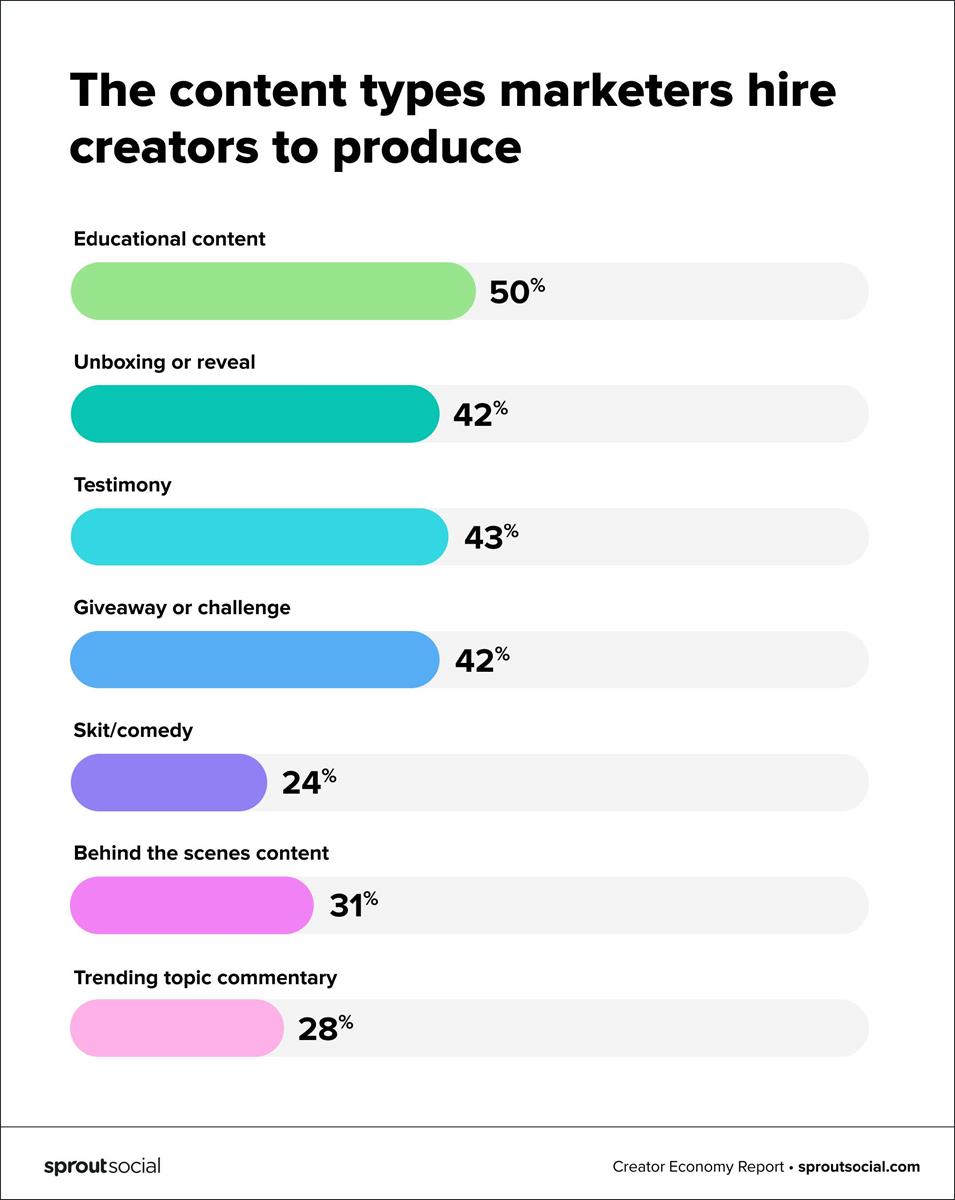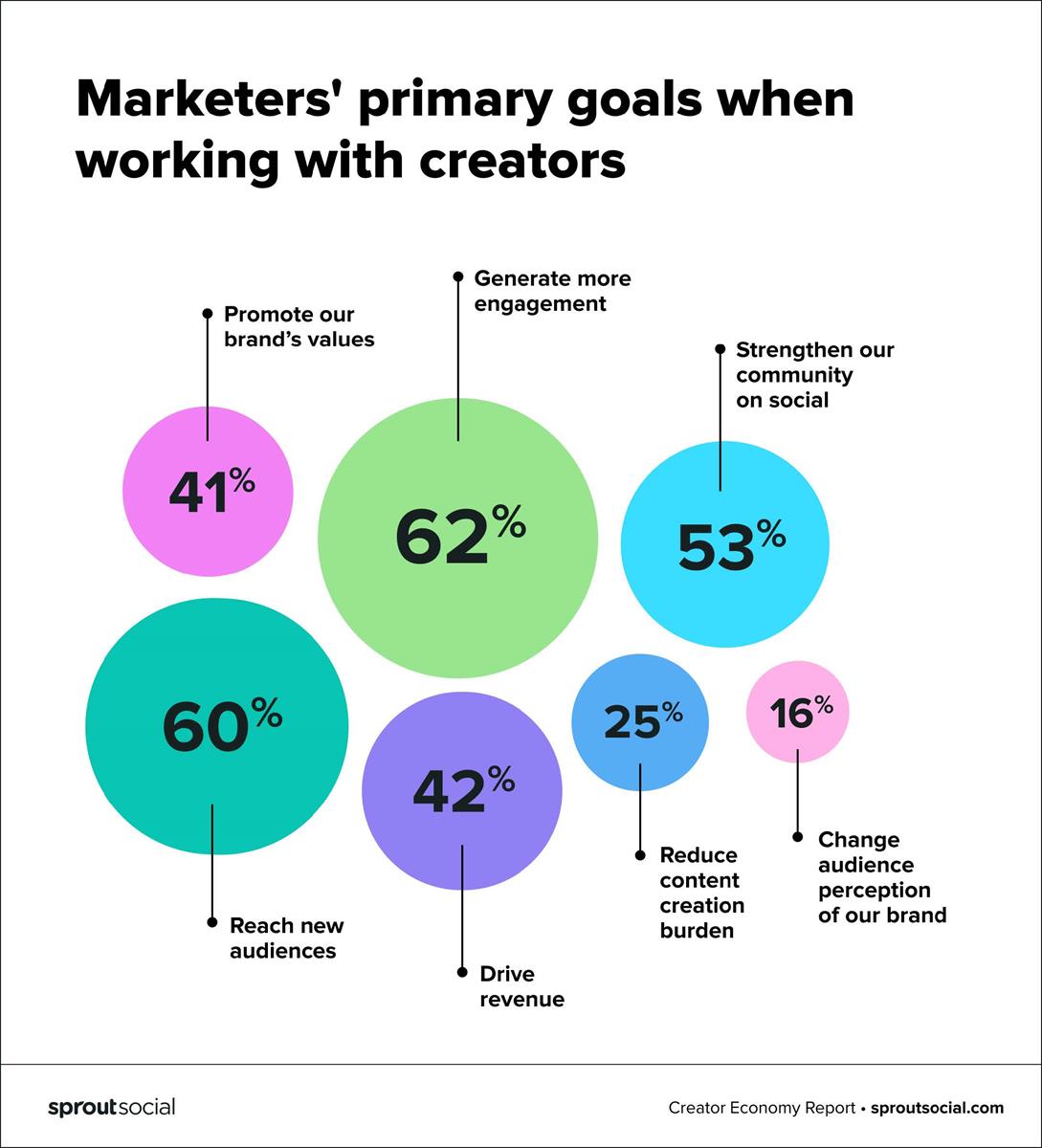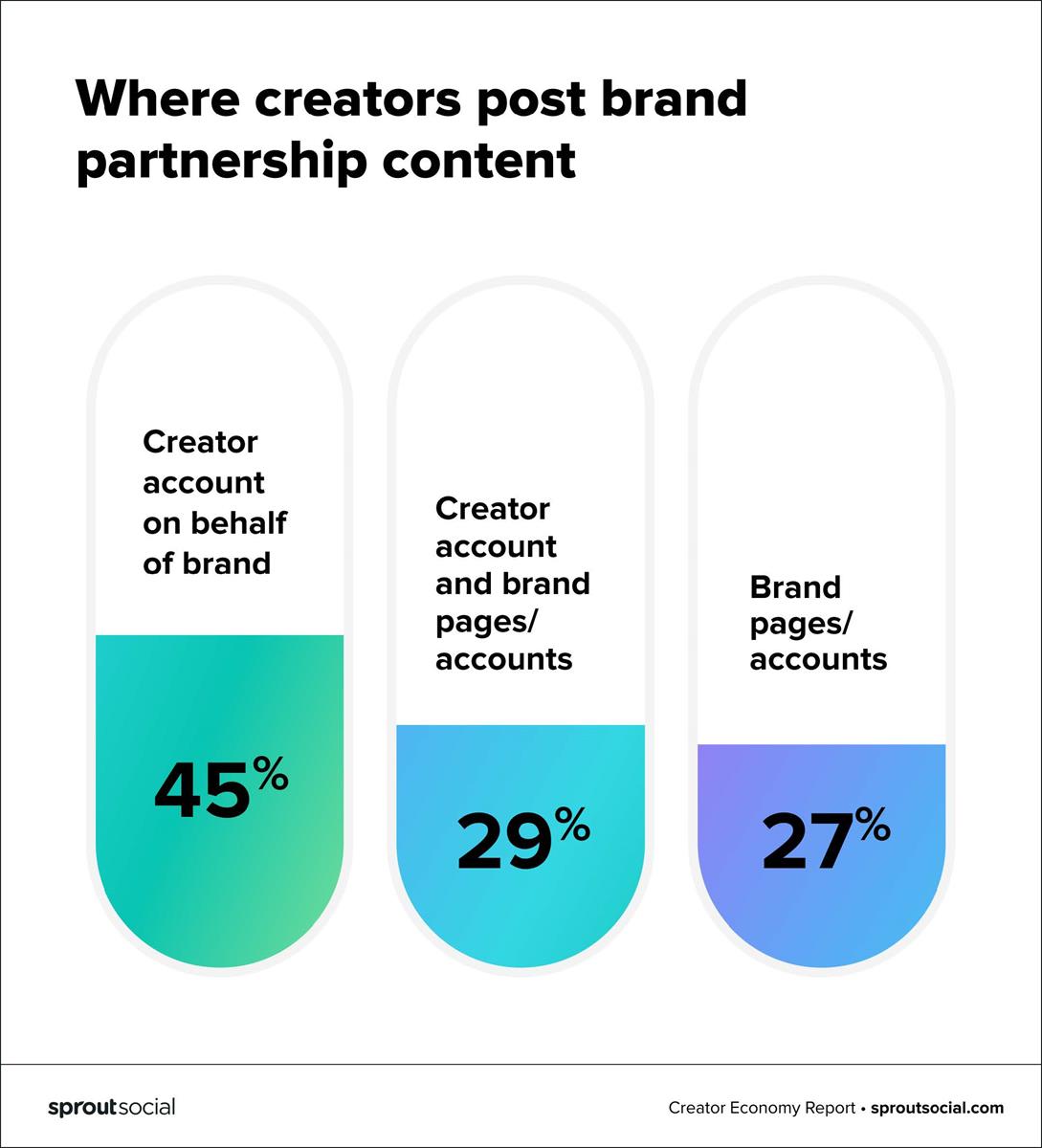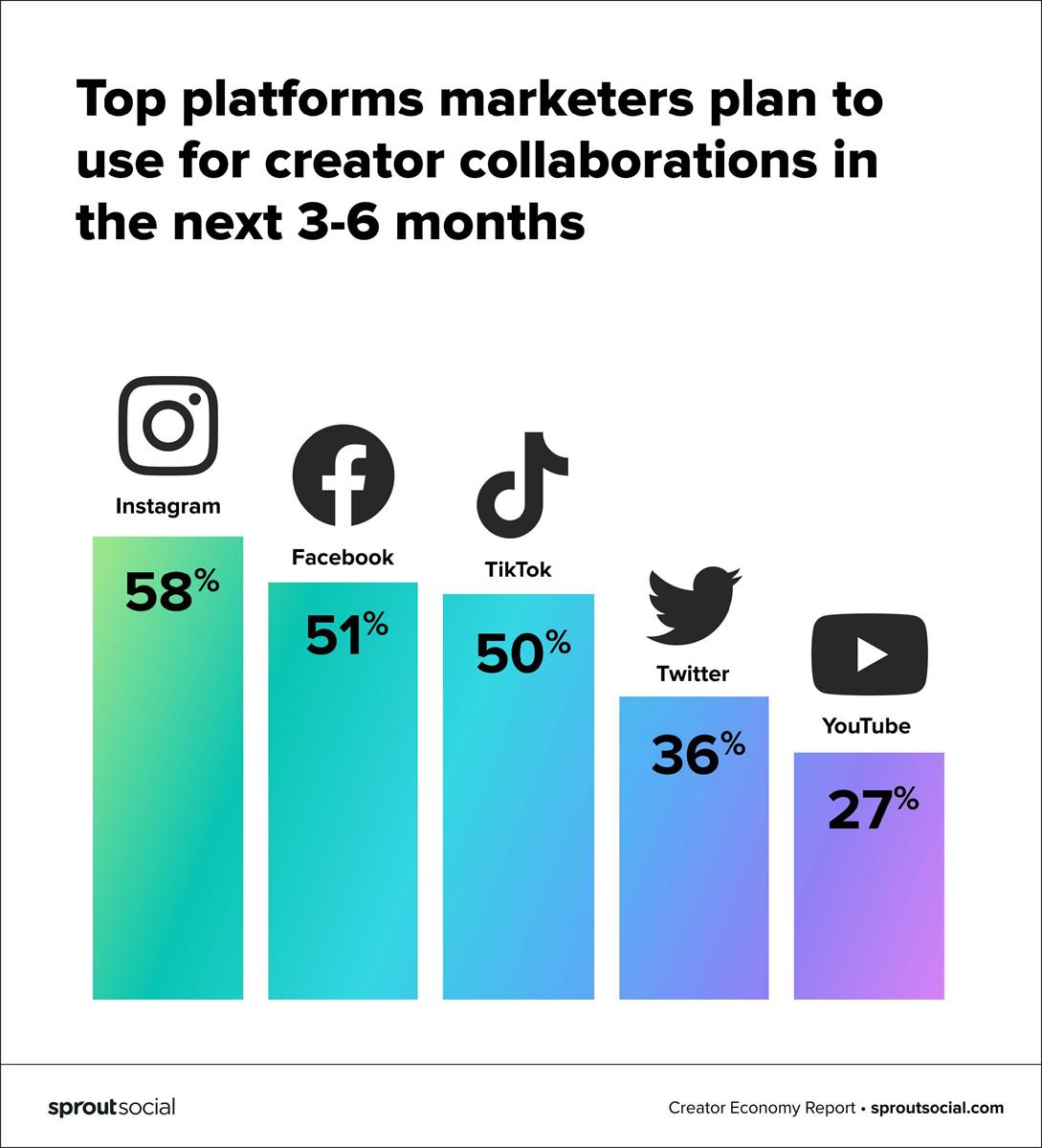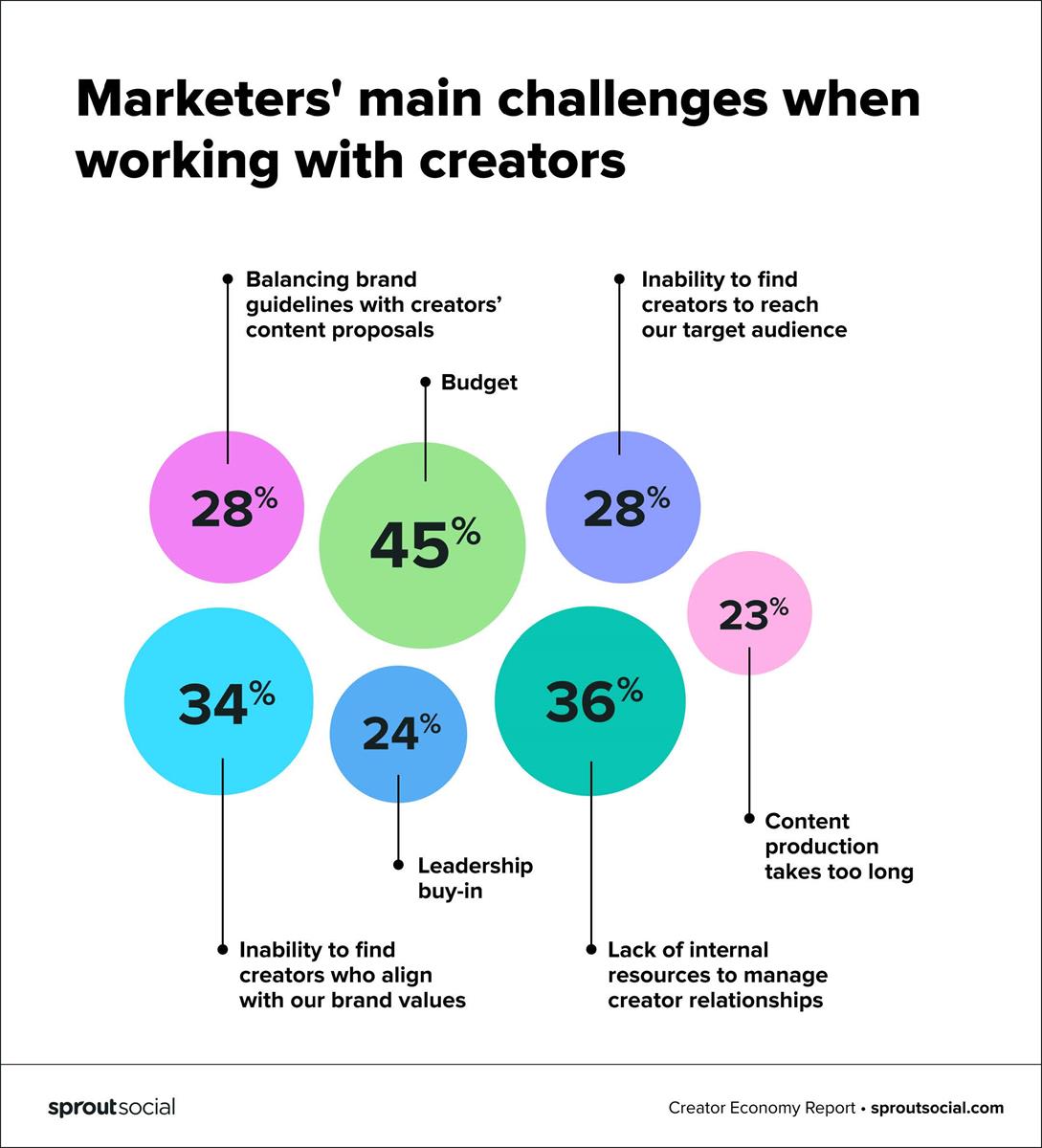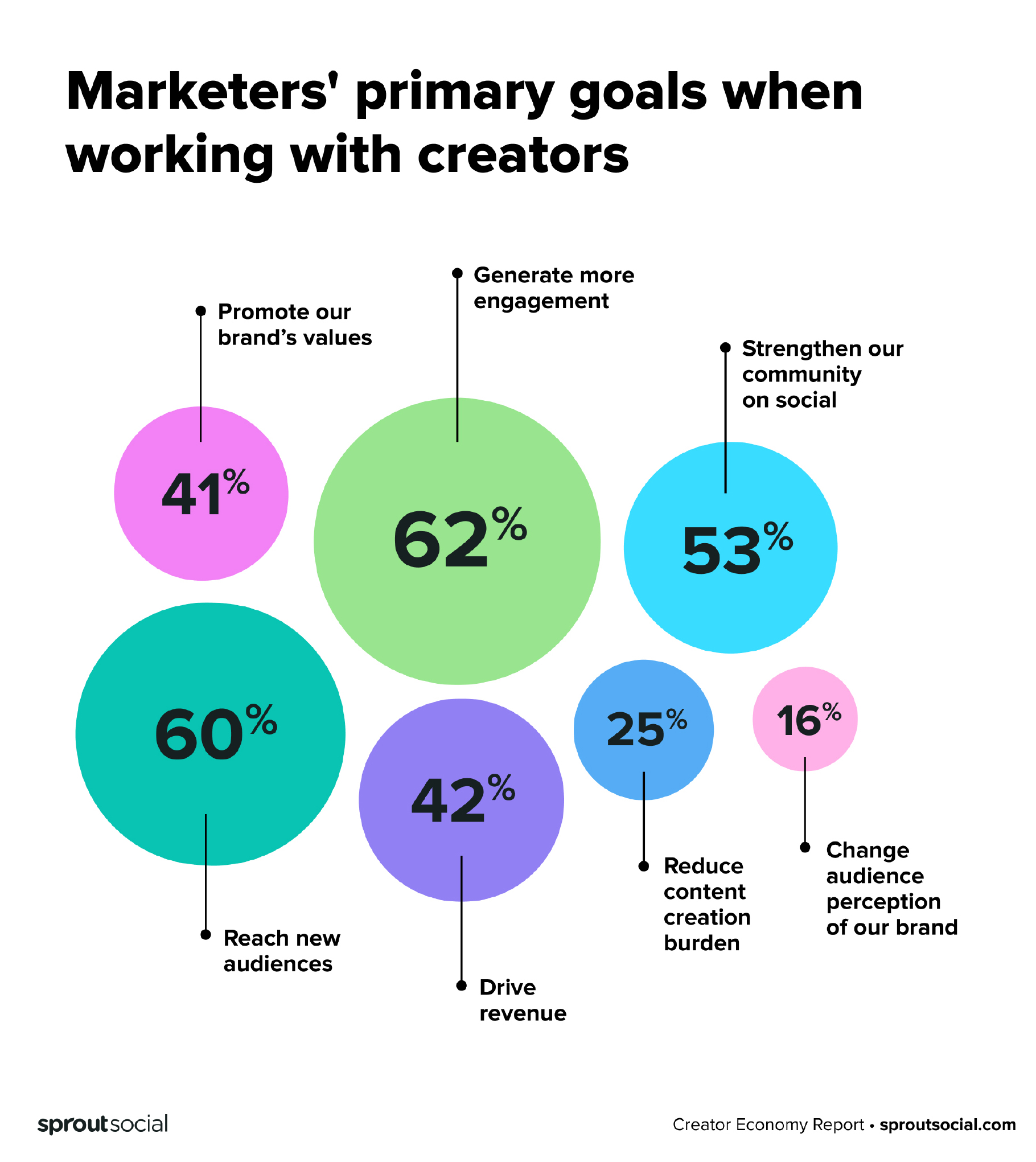
TL;DR
- Sprout Social surveyed more than 500 US marketers about their relationship with the creator economy — from their goals and challenges with creator marketing, to which platforms and content types have the most creator potential.
- Authenticity of relationships that creators have with communities is gold for marketers, but brands will likely need to cede some control over to creators to make the most of this advantage.
- The top challenge that marketers face with creator marketing is budget.
READ MORE: The Creator Economy: Making Dollars and Sense Out of Social Partnerships (Sprout Social)
Marketers rank generating engagement and reaching new audiences as their top two goals of creator marketing — but they may have to hand some control over to creators to realize the full benefits of these partnerships.
According to Sprout Social, “the opportunity to reach your audience in a way that feels more organic can’t be overstated.”
In its fresh survey of more than 500 marketers, “The Creator Economy: Making Dollars and Sense Out of Social Partnerships,” the social media management platform finds that, by leaning on creators, 52% of marketers hope to strengthen their social community and 41% seek to promote their brand values.
“Creators can even help you change your audience’s perception of your brand, with 16% of respondents citing that as a goal for their creator strategy,” says Sprout.
But brands will likely have to surrender some control over to creators in order to capture the full benefits of these partnerships.
“While creator content is paid media, it’s not necessarily owned by the brand.”
For maximum reach, 45% of brands have the creator post on their own account, compared with 27% that only post on brand channels. Hosting content on the creator’s account can give these campaigns “a more organic feel” with the added benefit of extending your reach.
“With the right research and sourcing, you can identify creators whose followers intersect with your target audience, but may be less familiar with your brand. A little less control over the content is well worth the benefits.”
When it comes to types of content, brands have choices. Per the survey, educational content takes the top spot for marketers. It should be no surprise that brands are looking for creators to authentically show consumers how to use their product or service.
“If potential customers are coming in primed on how to use your product and the benefits of doing so, they’re more likely to be satisfied. Plus, who can resist the fun of learning something new?”
Unboxing and reveal content are also popular at 42%. Nearly a third of marketers want to win over audiences with behind-the-scenes content that demonstrates how real people use their products in everyday life.
Facebook, Instagram and TikTok are the top homes for creator partnerships, “but marketers shouldn’t sleep on YouTube,” says Sprout. More than half of consumers plan on spending serious time on the platform, but only 27% of marketers are putting money into YouTube creator collaborations.
On Instagram and Facebook, story posts reign supreme. For TikTok, links in the bios are extremely popular since they drive conversion, making them a prime candidate for affiliate marketing plays like #TikTokMadeMeBuyIt-styled content. Brand shoutouts in YouTube videos are cost effective and work well since they’re embedded into the content audiences are choosing to watch.
“To get the best ROI from your creator partnerships, you need to think about your goals,” Spout advises. Story posts are popular with marketers because of the cost, but the fleeting nature of the style might not generate the most long-term bang for your buck. If you’re looking to convert, links are your best friend — but they may cost more. It’s important to weigh pricing against the content’s potential longevity and goals of your campaign.
As expected, the top challenge marketers face with creator marketing is budget. Most marketers (74%) plan to spend at least a quarter of their social media budget on partnering with a content creator over the next three to six months.
As social media teams are stretched thinner, finding resources to vet and manage creator relationships is easier said than done. Though, 25% of marketers believe creator marketing can alleviate content creation pressure for their teams.
“Across businesses of all sizes, the social media and communications teams are taking that on internally,” the report comments. “But as companies grow, they’re more likely to bring in others like legal and finance to help handle budgetary and contractual considerations. When it comes to enterprise companies (5,000+ employees), 40% involve their legal team in the sourcing process from the beginning.”
Adding a few extra weeks for creator sourcing “can have a serious impact on the effectiveness of your overall campaign — and add an entire month to your project timeline.” This is where tapping into platform-specific features like TikTok’s Creator Marketplace, YouTube’s BrandConnect, or Instagram’s Creator Marketplace can help marketers scale their creator efforts.
CRUSHING IT IN THE CREATOR ECONOMY:
The cultural impact a creator has is already surpassing that of traditional media, but there’s still a stark imbalance of power between proprietary platforms and the creators who use them. Discover what it takes to stay ahead of the game with these fresh insights hand-picked from the NAB Amplify archives:
- How Creators (Professional and Otherwise) Are Making Money in the Creator Economy
- Almost 25% of Us Are Content Creators. Here’s Why That’s Awesome (and How It’s Actionable).
- Storytelling on Demand: It Has to Happen for the Creator Economy
- In the Creator Economy, Creator-Educators Contain Multitudes
- The Economy Part of the Creator Economy
- Why Community Is Everything for the Creator Economy


